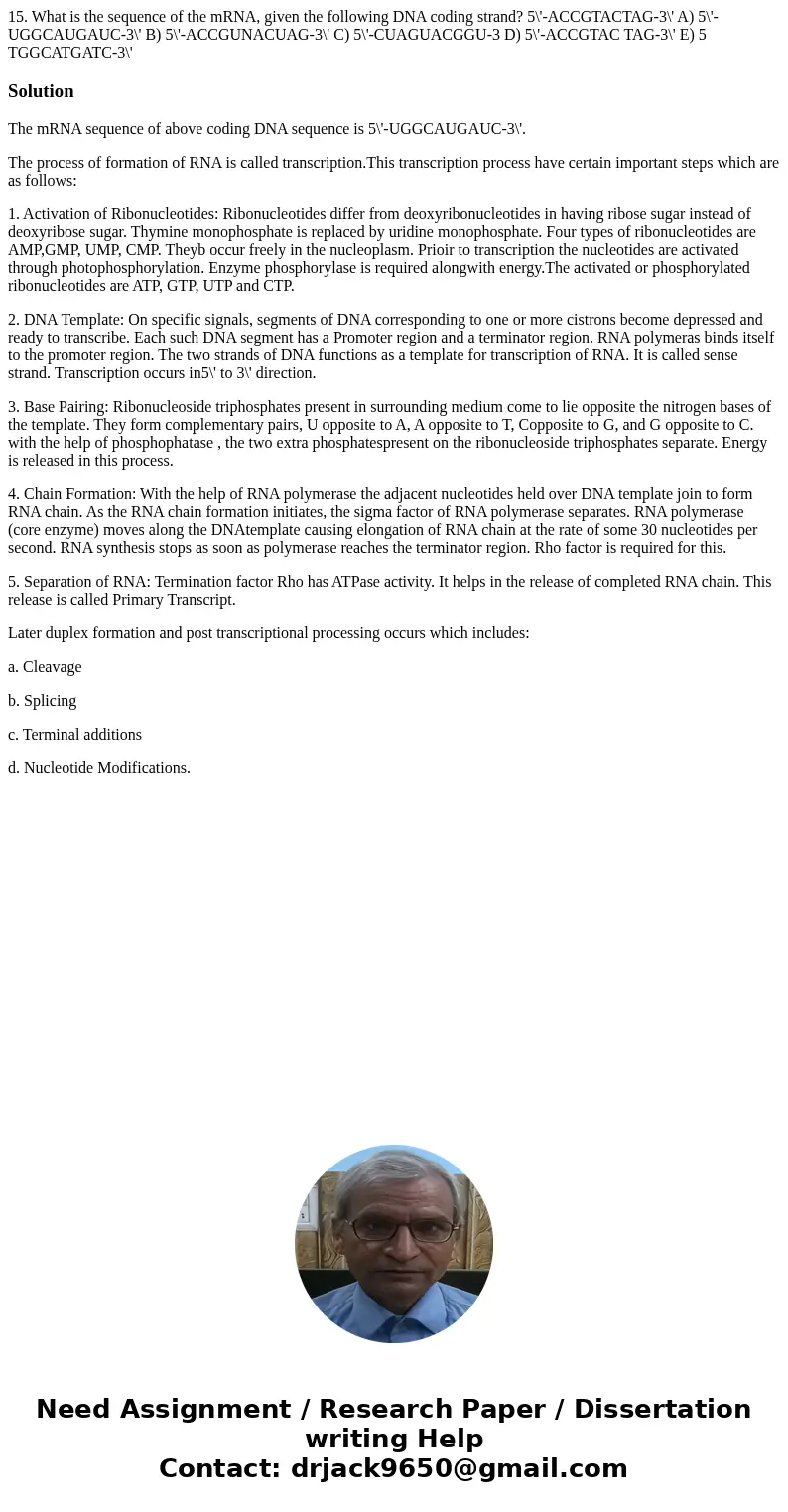15 What is the sequence of the mRNA given the following DNA
Solution
The mRNA sequence of above coding DNA sequence is 5\'-UGGCAUGAUC-3\'.
The process of formation of RNA is called transcription.This transcription process have certain important steps which are as follows:
1. Activation of Ribonucleotides: Ribonucleotides differ from deoxyribonucleotides in having ribose sugar instead of deoxyribose sugar. Thymine monophosphate is replaced by uridine monophosphate. Four types of ribonucleotides are AMP,GMP, UMP, CMP. Theyb occur freely in the nucleoplasm. Prioir to transcription the nucleotides are activated through photophosphorylation. Enzyme phosphorylase is required alongwith energy.The activated or phosphorylated ribonucleotides are ATP, GTP, UTP and CTP.
2. DNA Template: On specific signals, segments of DNA corresponding to one or more cistrons become depressed and ready to transcribe. Each such DNA segment has a Promoter region and a terminator region. RNA polymeras binds itself to the promoter region. The two strands of DNA functions as a template for transcription of RNA. It is called sense strand. Transcription occurs in5\' to 3\' direction.
3. Base Pairing: Ribonucleoside triphosphates present in surrounding medium come to lie opposite the nitrogen bases of the template. They form complementary pairs, U opposite to A, A opposite to T, Copposite to G, and G opposite to C. with the help of phosphophatase , the two extra phosphatespresent on the ribonucleoside triphosphates separate. Energy is released in this process.
4. Chain Formation: With the help of RNA polymerase the adjacent nucleotides held over DNA template join to form RNA chain. As the RNA chain formation initiates, the sigma factor of RNA polymerase separates. RNA polymerase (core enzyme) moves along the DNAtemplate causing elongation of RNA chain at the rate of some 30 nucleotides per second. RNA synthesis stops as soon as polymerase reaches the terminator region. Rho factor is required for this.
5. Separation of RNA: Termination factor Rho has ATPase activity. It helps in the release of completed RNA chain. This release is called Primary Transcript.
Later duplex formation and post transcriptional processing occurs which includes:
a. Cleavage
b. Splicing
c. Terminal additions
d. Nucleotide Modifications.

 Homework Sourse
Homework Sourse